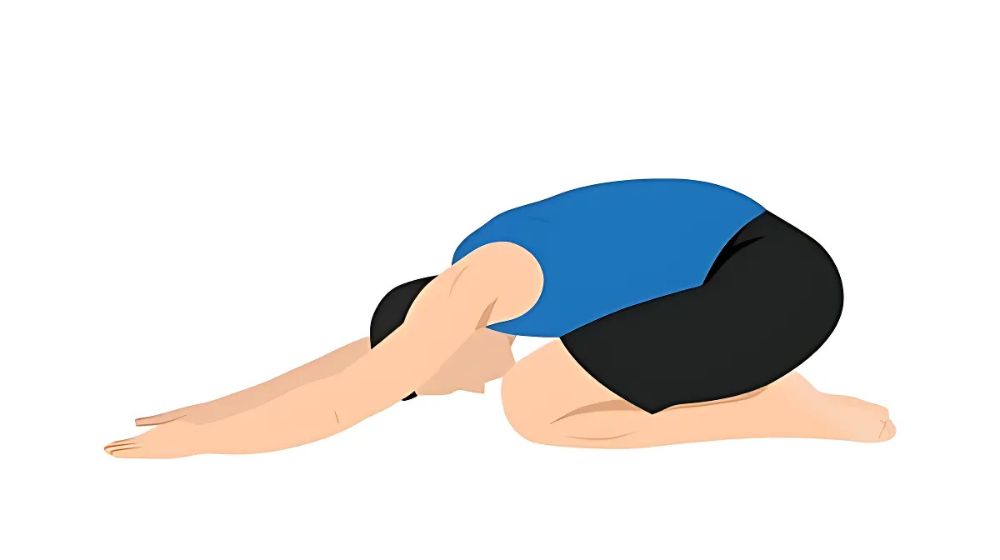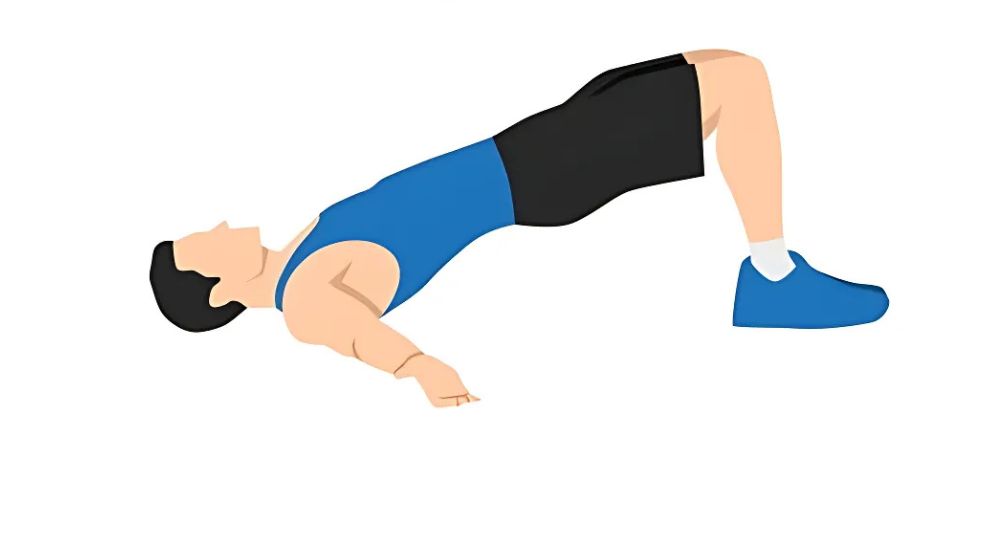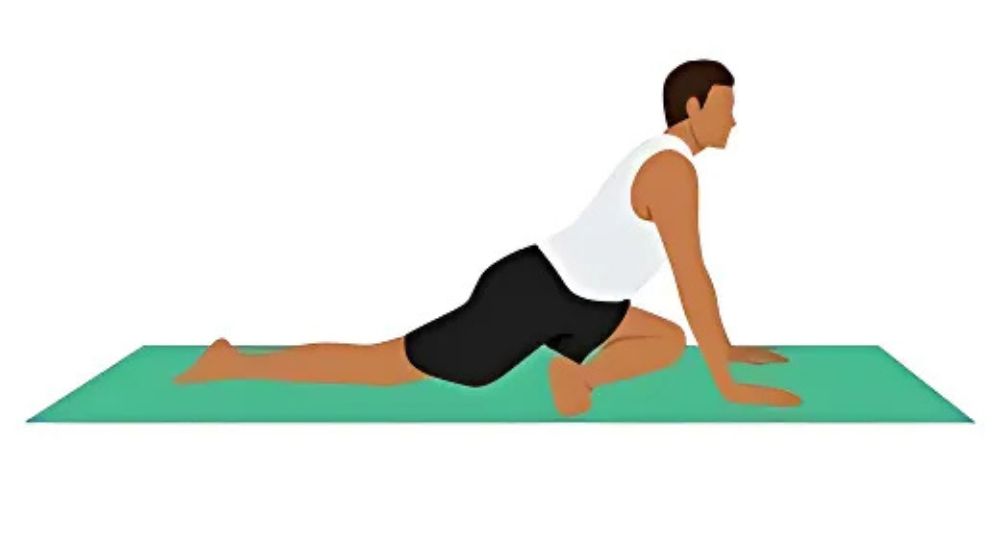Yoga is essential for athletes as it improves flexibility, strength, balance, and mental focus, while aiding recovery and reducing injury risk.
Introduction
Yoga is becoming increasingly recognized as an essential practice for athletes looking to improve their performance, prevent injuries, and maintain overall physical and mental well-being. Beyond enhancing flexibility and strength, yoga offers a holistic approach to conditioning the body and mind, helping athletes optimize their athletic potential. By integrating breath control, balance, and mindfulness into training, yoga empowers athletes to build a stronger foundation, promote recovery, and enhance focus, making it a valuable addition to any athletic routine.
Benefits of Yoga for Athletes {1}
Yoga offers a wide range of benefits that can significantly enhance athletic performance and overall well-being. Here are some key advantages for athletes.
Improved Flexibility

Flexibility is a key component of athletic performance, and yoga offers a variety of benefits to enhance it. Regular yoga practice helps lengthen and stretch muscles, increasing the range of motion in joints and improving overall flexibility. This is especially beneficial for athletes, as it allows for smoother, more fluid movements during training and competition.
Benefits of Improved Flexibility:
- Reduced Risk of Injury
Increased flexibility helps prevent strains, sprains, and other overuse injuries by ensuring muscles and joints can move through their full range of motion. - Enhanced Performance
Flexible muscles are better able to perform dynamic movements, allowing athletes to execute actions like sprinting, jumping, and quick directional changes with ease. - Faster Recovery
Stretching through yoga assists in relieving tension and improving blood flow to muscles, aiding in quicker recovery after intense workouts or events. - Improved Posture
Flexible muscles support better body alignment, which is crucial for maintaining good posture and reducing strain on the spine and other areas during athletic activities.
Enhanced Strength
Yoga is often seen as a practice focused on flexibility and relaxation, but it also significantly improves strength, especially functional strength that supports athletic performance. Through a combination of bodyweight exercises, isometric holds, and poses that engage multiple muscle groups, yoga builds both muscular and core strength.
Benefits of Enhanced Strength:
- Functional Strength
Yoga strengthens stabilizing muscles, core, and smaller muscle groups that are crucial for balance and supporting larger movements in sports. - Improved Power and Endurance
Holding poses for extended periods or flowing through sequences builds muscular endurance, helping athletes sustain strength throughout training sessions or competitions. - Reduced Muscle Imbalances
The balanced and holistic approach of yoga helps correct muscle imbalances that often occur due to repetitive movements in specific sports, leading to a more well-rounded strength development. - Support for Athletic Movements
By improving strength in functional positions and ranges, yoga enhances performance in dynamic sports actions such as sprinting, jumping, and quick changes in direction. - Better Recovery and Injury Prevention
Strength gained through yoga enhances muscle stability and reduces the risk of overuse injuries by promoting proper body mechanics and alignment.
Better Posture and Alignment
Maintaining good posture and proper body alignment is crucial for athletes to perform optimally and prevent injuries. Yoga emphasizes body awareness, mindfulness, and alignment, helping to improve posture and ensure that movements are efficient and balanced.
Benefits of Better Posture and Alignment:
- Reduced Strain on Joints and Muscles
Correct alignment reduces unnecessary stress on muscles, joints, and the spine, minimizing the risk of overuse injuries and strain-related discomfort. - Increased Movement Efficiency
Proper posture supports efficient movement patterns, allowing athletes to execute actions like running, jumping, and lifting with greater ease and precision. - Enhanced Balance and Stability
Yoga poses require precise alignment and balance, strengthening stabilizing muscles and improving overall body control, which translates directly to athletic performance. - Improved Breathing and Core Activation
Proper alignment in yoga often involves deep breathing and engaging the core, which enhances diaphragmatic breathing and strengthens core muscles, essential for better body control. - Long-Term Injury Prevention
Maintaining good posture reduces the risk of musculoskeletal issues and encourages sustainable movement patterns, helping athletes maintain long-term performance and health.
Injury Prevention and Recovery
Injury prevention and effective recovery are critical aspects of an athlete’s training regimen, and yoga offers a holistic approach to both. By promoting flexibility, strength, balance, and mindfulness, yoga helps reduce the risk of injuries and speeds up the recovery process.
Benefits of Injury Prevention and Recovery:
- Enhanced Flexibility and Mobility
Regular yoga practice improves joint flexibility and range of motion, allowing for smoother and safer athletic movements, reducing the likelihood of strains and sprains. - Core Stability
Many yoga poses target the core muscles, which are essential for maintaining proper body alignment and reducing the risk of lower back and abdominal injuries. - Balance and Stability
Yoga emphasizes balance through poses that challenge equilibrium, helping athletes improve proprioception and prevent falls or unstable movements during training and competition. - Muscle Recovery and Circulation
The stretching and deep breathing in yoga improve blood flow, helping to flush out toxins and reduce muscle tension for quicker recovery after intense physical activity. - Mind-Body Connection
Through mindfulness and relaxation techniques, yoga promotes mental clarity and stress reduction, which can lower cortisol levels and aid in faster recovery from both physical and mental fatigue.
Mental Focus and Concentration
For athletes, mental clarity and concentration are just as important as physical strength and endurance. Yoga helps improve mental focus and reduce distractions, enhancing an athlete’s ability to perform under pressure.
Benefits of Mental Focus and Concentration:
- Improved Mindfulness
Yoga practices involve breath control and meditation, which enhance awareness and help athletes stay present during training and competition. - Reduced Stress and Anxiety
Through relaxation techniques and controlled breathing, yoga reduces stress and anxiety, allowing athletes to stay calm and composed in high-pressure situations. - Enhanced Performance in High-Intensity Situations
By sharpening mental focus, athletes can maintain better decision-making and consistency in their performance, even during intense moments. - Better Concentration on Technical Movements
Yoga encourages concentration on small details, which helps athletes execute complex movements or skill-based tasks with precision and confidence. - Emotional Resilience
Consistent yoga practice strengthens emotional resilience, helping athletes manage both physical and mental setbacks more effectively.
Key Yoga Poses for Athletes
Yoga offers a variety of poses that can enhance athletic performance by improving flexibility, strength, balance, and recovery. Here are some key yoga poses tailored to the needs of athletes:
Tree Pose (Vrikshasana)

Tree Pose is a balancing pose that helps improve focus, stability, and balance. It strengthens the legs, core, and improves mental concentration, making it ideal for athletes looking to enhance agility and body awareness.
Benefits of Tree Pose:
- Improves Balance and Stability
The single-leg stance challenges your balance, helping athletes improve body control and stability for dynamic movements. - Strengthens Lower Body Muscles
Tree pose targets the thighs, calves, and ankles, enhancing strength in the legs and stabilizing muscles. - Enhances Focus and Concentration
Staying in the pose requires mindfulness and concentration, aiding mental clarity and reducing distractions during performance. - Promotes Core Engagement
The pose engages the core muscles to maintain balance, strengthening the abdominal and back regions. - Supports Better Posture
Regular practice helps align the body, improving posture and reducing strain on the lower back and hips during athletic activities.
Child’s Pose (Balasana)

Child’s Pose is a restorative yoga pose that promotes relaxation, flexibility, and recovery. It provides a gentle stretch for the back, hips, and ankles while calming the mind, making it a valuable pose for athletes to incorporate into their routine.
Benefits of Child’s Pose:
- Promotes Relaxation and Stress Relief
Child’s Pose encourages deep breathing, helping to release tension and reduce stress after intense physical activity or competition. - Stretches the Lower Back and Hips
The gentle stretch through the back, hips, and thighs improves flexibility and alleviates tightness caused by repetitive movements in sports. - Improves Posture
The pose helps align the spine, promoting proper posture and relieving pressure on the lower back and shoulders. - Aids in Recovery
By easing tension and promoting blood flow, Child’s Pose supports recovery, allowing athletes to reset and regain energy for future workouts. - Enhances Breathing and Relaxation
Focused breathing during the pose enhances oxygen flow, improving respiratory function and reducing fatigue.
Bridge Pose (Setu Bandhasana)

Bridge Pose is a versatile yoga pose that strengthens the glutes, core, and lower back while improving flexibility and spinal alignment. It is beneficial for athletes looking to enhance strength, posture, and recovery.
Benefits of Bridge Pose:
- Strengthens the Glutes and Core
Bridge Pose engages the glutes, hamstrings, and core, helping to build overall lower body strength and stability. - Improves Spine and Hip Flexibility
The pose stretches and realigns the spine, improving flexibility in the lower back and hips, which is essential for injury prevention. - Enhances Posture
By promoting a neutral spine and proper alignment, Bridge Pose helps improve posture and reduce strain on the lower back. - Boosts Recovery
The pose helps release tension in the lower body, promoting recovery and relieving tightness after intense training or competition. - Promotes Mental Clarity
Bridge Pose requires focus and controlled breathing, enhancing mental concentration and reducing stress.
Pigeon Pose (Eka Pada Rajakapotasana)

Pigeon Pose is a deep hip opener that stretches the hips, glutes, and lower back. It is particularly beneficial for athletes who perform repetitive movements, such as runners or cyclists, helping to relieve tension and improve flexibility.
Benefits of Pigeon Pose:
- Deep Hip and Glute Stretch
Pigeon Pose deeply targets the hip flexors, hip rotators, and glutes, alleviating tightness and improving mobility. - Enhances Flexibility
The pose increases flexibility in the hips, lower back, and thighs, which can reduce the risk of injury in activities requiring lower body movement. - Improves Postural Alignment
By stretching the hips and lower back, Pigeon Pose promotes better posture and reduces strain on the lower spine. - Reduces Muscle Tension
Regular practice of Pigeon Pose helps release tension in the hips and pelvic region, aiding in recovery and injury prevention. - Supports Recovery
The pose supports muscle recovery by promoting blood flow to the lower body, helping to ease stiffness after intense training sessions.
Downward-Facing Dog (Adho Mukha Svanasana)
Downward-Facing Dog is one of the most popular and versatile yoga poses. It stretches and strengthens the entire body while improving flexibility, balance, and posture. This pose is especially beneficial for athletes looking to enhance overall strength and flexibility.
Benefits of Downward-Facing Dog:
- Full-Body Stretch
Downward-Facing Dog stretches the hamstrings, calves, shoulders, spine, and arms, helping to improve overall flexibility. - Strengthens Upper Body and Core
The pose engages the arms, shoulders, core, and legs, building strength and stability for athletic movements. - Improves Posture and Alignment
By lengthening the spine and aligning the body, Downward-Facing Dog promotes proper posture and reduces strain on the back. - Enhances Balance and Stability
Holding the pose requires focus and balance, helping athletes develop better body awareness and control. - Supports Recovery and Circulation
The gentle inversion improves blood flow to the upper body, aiding recovery and reducing fatigue after intense training or competition.
Yoga Styles Suitable for Athletes
Yoga offers various styles that cater to the unique needs of athletes, enhancing flexibility, strength, recovery, and mental focus. Here are some popular yoga styles suitable for athletes:
Vinyasa Yoga
Vinyasa Yoga is a dynamic, flowing style of yoga that links breath with movement. It is one of the most popular styles for athletes due to its emphasis on strength, flexibility, and cardiovascular endurance.
Benefits of Vinyasa Yoga:
- Improves Flexibility
Vinyasa sequences involve a continuous flow of poses that stretch and lengthen muscles, enhancing overall flexibility. - Builds Strength
This style challenges the body through weight-bearing poses and transitions, helping to develop both muscular and core strength. - Enhances Cardiovascular Endurance
The flowing nature of Vinyasa increases heart rate and builds stamina, making it ideal for athletes looking to improve fitness levels. - Promotes Mind-Body Connection
Coordinating breath with movement improves focus, concentration, and mental clarity, essential for athletic performance. - Supports Injury Prevention
By promoting proper alignment and gradually transitioning through poses, Vinyasa reduces the risk of injuries related to improper movement patterns. - Aids Recovery
Vinyasa sequences often include moments of rest and relaxation, helping to release tension and promote recovery after intense physical activities.
Power Yoga
Power Yoga is a vigorous and fitness-based style of yoga that incorporates intense physical movements and poses. It is designed to build strength, flexibility, and endurance while promoting mental focus and stability—making it ideal for athletes looking for a challenging, athletic practice.
Benefits of Power Yoga:
- Increases Strength
Power Yoga emphasizes bodyweight exercises and dynamic movements that help build muscular strength, especially in the arms, core, and legs. - Enhances Flexibility and Mobility
Through intense stretches and transitions, Power Yoga increases flexibility, particularly in key areas like the hips, shoulders, and spine. - Improves Cardiovascular Fitness
The fast-paced, high-energy nature of Power Yoga boosts heart rate and builds cardiovascular endurance, helping athletes maintain stamina during high-intensity activities. - Boosts Core Stability
Strengthening the core is a key focus in Power Yoga, promoting better balance, stability, and injury prevention. - Mental Clarity and Focus
The challenging nature of Power Yoga requires concentration and mindfulness, helping athletes develop a strong mental foundation for managing pressure and performance. - Enhances Recovery
Power Yoga incorporates active recovery through dynamic stretching and breathing exercises, aiding in muscle relaxation and faster recovery after workouts or competitions.
Hatha Yoga
Hatha Yoga is a gentle, foundational style of yoga that focuses on physical postures (asanas), breath control (pranayama), and relaxation. It is a slower-paced practice that promotes balance, strength, and mindfulness, making it ideal for athletes seeking a balanced approach to flexibility and strength.
Benefits of Hatha Yoga:
- Promotes Flexibility
Hatha Yoga involves holding poses for longer periods, improving flexibility in the muscles and joints, which is beneficial for athletic performance. - Enhances Strength
While slower than more dynamic styles, Hatha Yoga builds strength by focusing on static postures that engage multiple muscle groups. - Improves Posture and Alignment
The focus on precise alignment in Hatha Yoga helps correct imbalances and promotes better body mechanics, reducing the risk of injury. - Reduces Stress and Improves Mental Clarity
By incorporating breathing techniques and mindfulness, Hatha Yoga calms the mind, helping athletes manage stress and stay focused. - Supports Recovery
Hatha Yoga encourages deep breathing and relaxation, aiding in muscle recovery and reducing tension after intense training or competition. - Balances Energy Flow
This style emphasizes balanced energy flow through a combination of poses and breathwork, helping athletes maintain overall well-being.
Ashtanga Yoga
Ashtanga Yoga is a physically demanding and disciplined style of yoga that follows a set sequence of postures linked by breath and movement. It offers a structured approach to building strength, flexibility, and mental focus, making it well-suited for athletes seeking a rigorous, athletic practice.
Benefits of Ashtanga Yoga:
- Increases Strength and Endurance
Ashtanga sequences involve a continuous flow of dynamic movements that build both muscular strength and cardiovascular endurance. - Enhances Flexibility
The consistent practice of specific poses in a progressive sequence improves flexibility in key areas, such as the hips, spine, and shoulders. - Promotes Mental Focus
Coordinating breath with movement in Ashtanga requires intense concentration, helping athletes develop strong mental clarity and focus. - Supports Core Stability
The sequence of poses in Ashtanga targets core strength, enhancing stability and balance—essential for athletic performance and injury prevention. - Boosts Recovery
Although intense, the structure of Ashtanga includes rest periods and deep breathing that promote recovery and relaxation between sessions. - Improves Discipline and Consistency
With its set sequence, Ashtanga cultivates a disciplined practice, encouraging athletes to maintain regular, structured sessions for long-term benefits.
Restorative Yoga
Restorative Yoga is a gentle, nurturing style of yoga focused on relaxation and healing. It involves holding passive poses with the support of props such as blankets, bolsters, and cushions to create a deeply calming experience. This practice is ideal for athletes looking to recover, reduce stress, and promote mental and physical healing.
Benefits of Restorative Yoga:
- Promotes Deep Relaxation
Restorative Yoga calms the nervous system, reducing stress and promoting relaxation, which is essential for recovery and mental well-being. - Reduces Muscle Tension
Holding poses with the support of props alleviates tightness in the muscles, helping athletes recover from intense physical activity. - Enhances Flexibility and Mobility
Passive stretching and long holds improve flexibility without exerting strain, aiding in gradual muscle release. - Supports Injury Recovery
Restorative Yoga aids in healing by providing gentle stretches and support to overused or strained muscles, promoting faster recovery. - Improves Sleep and Stress Management
The slow-paced, meditative nature of Restorative Yoga helps reduce insomnia and anxiety, supporting athletes in managing both physical and mental fatigue. - Balances Energy Flow
Restorative Yoga focuses on releasing physical and emotional tension, helping athletes achieve a sense of balance and overall well-being.
Getting Started: Tips for Athletes New to Yoga
Yoga can be an excellent addition to an athlete’s training regimen, offering benefits such as improved flexibility, strength, recovery, and mental focus. If you’re new to yoga, here are some tips to help you get started and make the most of your practice.
Start Slow and Focus on Basics
When beginning a yoga practice, it’s important to take a step back and focus on the fundamentals. Starting slow allows you to build a solid foundation, ensuring safety, effectiveness, and a deeper understanding of yoga.
Benefits of Starting Slow:
- Prevents Injury
Rushing into advanced poses can lead to improper alignment and strain. Starting with simple poses helps establish good form, reducing the risk of injury. - Builds Strength and Flexibility Gradually
Slow, deliberate movements help gradually increase strength and flexibility without overexertion, making the practice sustainable over time. - Improves Mind-Body Connection
Slower-paced practice encourages mindfulness, helping you become more aware of how your body moves and responds to different poses. - Encourages Proper Breathing Techniques
Focusing on basic poses allows you to fully engage in breath control (pranayama), enhancing the mental and physical benefits of yoga. - Personalizes Your Experience
Starting with simpler postures lets you explore modifications and find what works best for your body, offering a more personalized approach. - Reduces Mental Overload
Trying to master complex sequences too quickly can feel overwhelming. By starting slow, you allow yourself to fully experience each pose and its benefits.
Prioritize Breath Control (Pranayama)
Breath control, or pranayama, is a fundamental aspect of yoga that significantly enhances both physical and mental well-being. By focusing on your breath, you can improve your performance, calm the mind, and deepen your yoga practice.
Benefits of Prioritizing Breath Control:
- Enhances Focus and Concentration
Deep, controlled breathing helps quiet the mind, making it easier to concentrate and stay present during yoga practice and athletic performance. - Reduces Stress and Anxiety
Breathwork helps regulate the nervous system, reducing stress and promoting a sense of calm, which is beneficial both during and after workouts. - Improves Lung Capacity
Pranayama exercises expand lung capacity, optimizing oxygen intake and supporting endurance during physical activities. - Aids in Recovery
Controlled breathing helps the body relax and supports faster recovery by reducing muscle tension and promoting circulation. - Boosts Energy Levels
Proper breath control can increase the flow of prana (life force energy), revitalizing the body and improving overall energy throughout the day. - Supports Performance
Breathing techniques improve breath awareness, helping athletes manage breath control during high-intensity exercises and maintaining a steady rhythm.
incorporate Recovery Poses
Recovery poses are an essential part of any athletic training routine. They help reduce muscle fatigue, improve flexibility, and support faster healing. Incorporating restorative yoga poses into your practice can speed up recovery and enhance overall performance.
Benefits of Incorporating Recovery Poses:
- Reduces Muscle Soreness and Tension
Recovery poses help release tight muscles and reduce post-workout soreness, allowing for smoother movement and better flexibility. - Supports Circulation and Healing
Gentle poses improve blood flow, which helps carry oxygen and nutrients to the muscles, promoting faster healing and recovery. - Enhances Relaxation
Restorative poses calm the nervous system, reducing stress and facilitating deeper relaxation, essential for effective recovery. - Balances Energy Levels
Focused recovery time allows the body to restore energy, ensuring that athletes maintain peak performance for future sessions. - Improves Sleep Quality
Gentle poses aid in relaxation, helping athletes achieve deeper and more restful sleep, which is crucial for recovery and mental clarity. - Injury Prevention
By promoting muscle release and flexibility, recovery poses help prevent overuse injuries and improve long-term joint health.
Choose the Right Yoga Style
Selecting the right yoga style is essential for meeting your specific athletic goals and needs. Different styles offer distinct benefits, from improving strength and flexibility to promoting recovery and mental focus. Here’s how to choose the best style for you.
Factors to Consider:
- Athletic Goals
- Power Yoga or Vinyasa Yoga is great for building strength, endurance, and dynamic movement.
- Restorative Yoga or Hatha Yoga focuses on recovery and relaxation.
- Intensity Level
- For a more rigorous practice, go for Ashtanga Yoga or Power Yoga.
- If you prefer a slower pace, try Hatha Yoga or Yin Yoga.
- Flexibility and Mobility
- Styles like Yin Yoga and Hatha Yoga enhance flexibility, ideal for athletes needing deep stretching.
- Recovery and Stress Management
- Restorative Yoga and Gentle Hatha are perfect for recovery and reducing mental stress.
- Focus on Core Strength and Balance
- Vinyasa Yoga and Ashtanga emphasize core stability and balance.
Conclusion
Incorporating yoga into an athlete’s training routine is more than just a practice—it’s a powerful tool for enhancing performance, promoting recovery, and fostering mental clarity. From improving flexibility and strength to reducing the risk of injuries and boosting mental resilience, yoga offers a well-rounded approach to achieving athletic excellence. By embracing this holistic discipline, athletes can unlock their full potential and maintain long-term health and success in their chosen sport.
FAQs
Why should athletes practice yoga?
Yoga helps improve flexibility, strength, balance, and mental focus, all of which are crucial for athletic performance.
How does yoga improve flexibility for athletes?
Yoga poses stretch and lengthen muscles, enhancing flexibility, which reduces the risk of injury and improves overall mobility.
Can yoga help with injury prevention?
Yes, regular yoga practice helps prevent injuries by improving posture, strengthening muscles, and increasing body awareness.
How does yoga benefit mental focus?
Yoga incorporates mindfulness and controlled breathing, which enhances concentration and reduces mental distractions during athletic performance.
Is yoga only for flexibility, or does it help build strength?
Yoga builds both strength and flexibility. Poses often engage multiple muscle groups, improving overall physical strength.
How does yoga aid in recovery for athletes?
Yoga supports recovery by promoting relaxation, reducing muscle tension, and improving blood flow to aid in faster healing.
Which yoga style is best for athletes looking for strength?
Power Yoga, Vinyasa Yoga, and Ashtanga Yoga are great for building strength and endurance.
Can yoga improve balance for athletes?
Yes, yoga focuses on balance through poses that challenge stability, which enhances performance in sports requiring precise control.
Does yoga improve cardiovascular health for athletes?
Vinyasa and Power Yoga are dynamic practices that elevate heart rates and improve cardiovascular fitness.
How often should athletes practice yoga?
Regular practice 2-3 times a week is effective, but it depends on personal goals and athletic demands.
Is yoga suitable for all types of athletes?
Yes, yoga is adaptable for all athletes, whether they are runners, weightlifters, swimmers, or martial artists.
Can yoga help with mental clarity during competition?
Yes, yoga improves mental clarity and reduces stress, which can enhance performance under pressure.
Does yoga help with recovery from high-intensity workouts?
Absolutely, yoga’s focus on restorative and gentle movements aids in reducing muscle tightness and promoting faster recovery.
How does yoga benefit athletic performance?
It enhances flexibility, reduces the risk of injuries, improves focus, and supports overall well-being, leading to better performance.
Can yoga improve posture for athletes?
Yes, yoga helps correct imbalances and promotes proper alignment, which improves posture and reduces strain.
By healthylyfe


